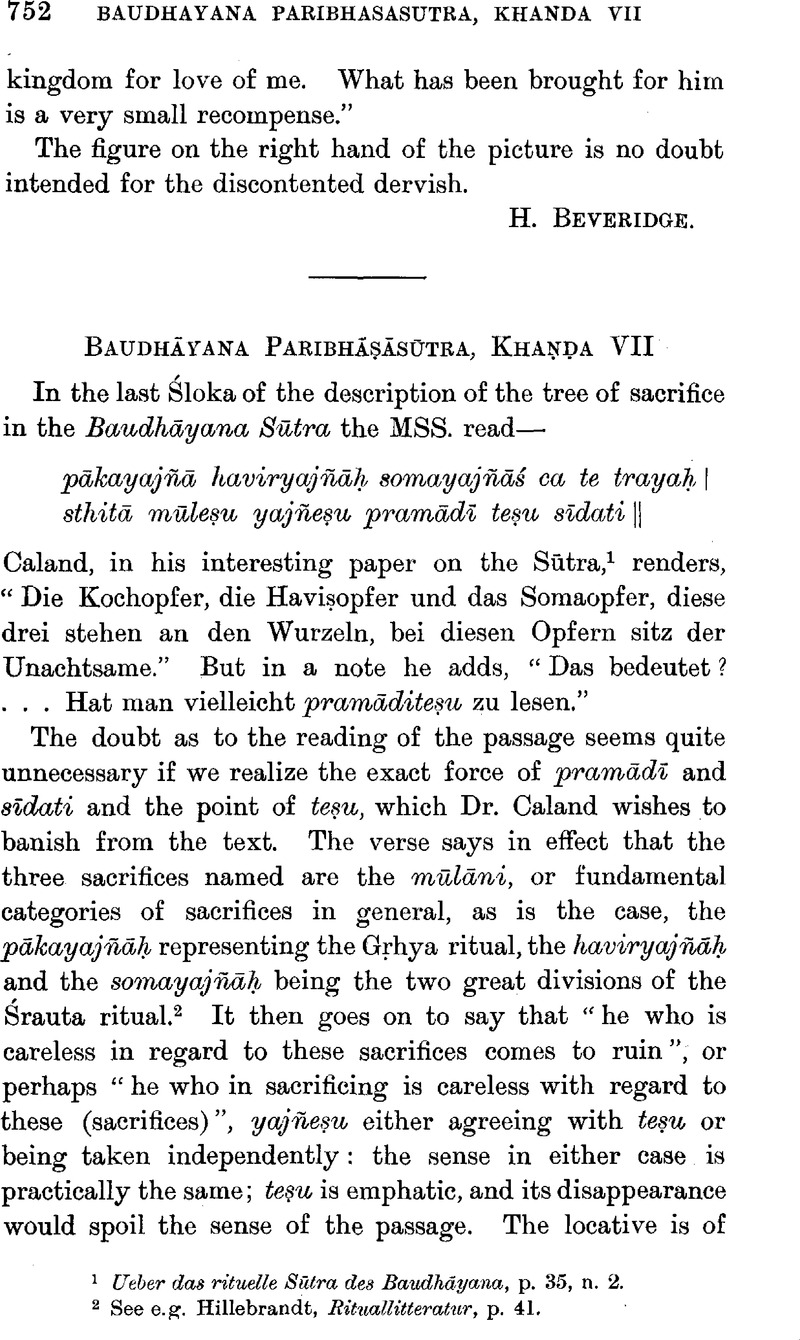No CrossRef data available.
Article contents
Baudhāyana Paribhāṣāsūtra, Khaṇḍa VII
Published online by Cambridge University Press: 15 March 2011
Abstract

- Type
- Miscellaneous Communications
- Information
- Copyright
- Copyright © The Royal Asiatic Society 1909
References
page 752 note 1 Ueber das ritudle Sūtra des Baudhāyana, p. 35, n. 2.Google Scholar
page 752 note 1 See e.g. Hillebrandt, , Rituallitteratur, p. 41.Google Scholar
page 753 note 1 Cf. Caland, , op. cit., p. 30.Google Scholar I do not lay any stress on the evidence for late date from the astronomical date of the Karmānta section (ibid., pp. 37 seq., citing Barth). To take Indian dates of the pre-Greek period seriously is waste of time.
page 753 note 2 Caland, p. 44. There is, however, a parallel in Aitareya Ara็yaka, v, 3, 3, where the MSS. and edd. read kīrtayiṣet after a meaningless ca, but where I restore cikīrtayiṣet; see my ed., p. 304.
page 754 note 1 In the Atharvan, Prāyaṡcitta Sūtra, i, 5Google Scholar, for the MSS. dvaicainam I would read haivainam, and not vaivainam as Caland, , VOJ., xviii, 199.Google Scholar
page 754 note 2 Caland, p. 51.Google Scholar
page 754 note 3 Cf. Delbrück, , Altindische Syntax, pp. 526–7.Google Scholar
page 754 note 4 Caland, pp. 45–6.Google Scholar
page 754 note 5 See my Aitareya Āraṇyaka, p. 246.Google Scholar
page 754 note 6 Ibid. p. 165. Cf. also JRAS., 1908, p. 1192.Google Scholar Very possibly Professor Jacobi's version (JRAS., 1909, pp. 421–3Google Scholar) of arthamāteva in Pariśiṣṭa Parvan, ii, 317,Google Scholar is correct, but the use of iva as practically eva is certain. A good example is Jaiminīya Brāhmaṇa, iii, 160,Google Scholarsa u tṛndann iva (or evā) ntarikṣaṃ śīrṣnabhyayāt, on which compare Hopkins' note, JAOS., xxvi, 66, n. 1.Google Scholar
page 754 note 7 Caland, p. 47.Google Scholar
page 754 note 8 See e.g. xx, 22, where the narrative tense is the perfect. For the criterion see references in my Aitareya Āraṇyaka, p. 172;Google ScholarJRAS., 1909, p. 150.Google Scholar
page 755 note 1 Cf. JRAS., 1907, p. 410.Google Scholar Caland is inclined, I think, to overestimate the age of the Sūtra; see p. 11.
page 754 note 2 Cf. JRAS., 1909, pp. 152 seq.Google Scholar


